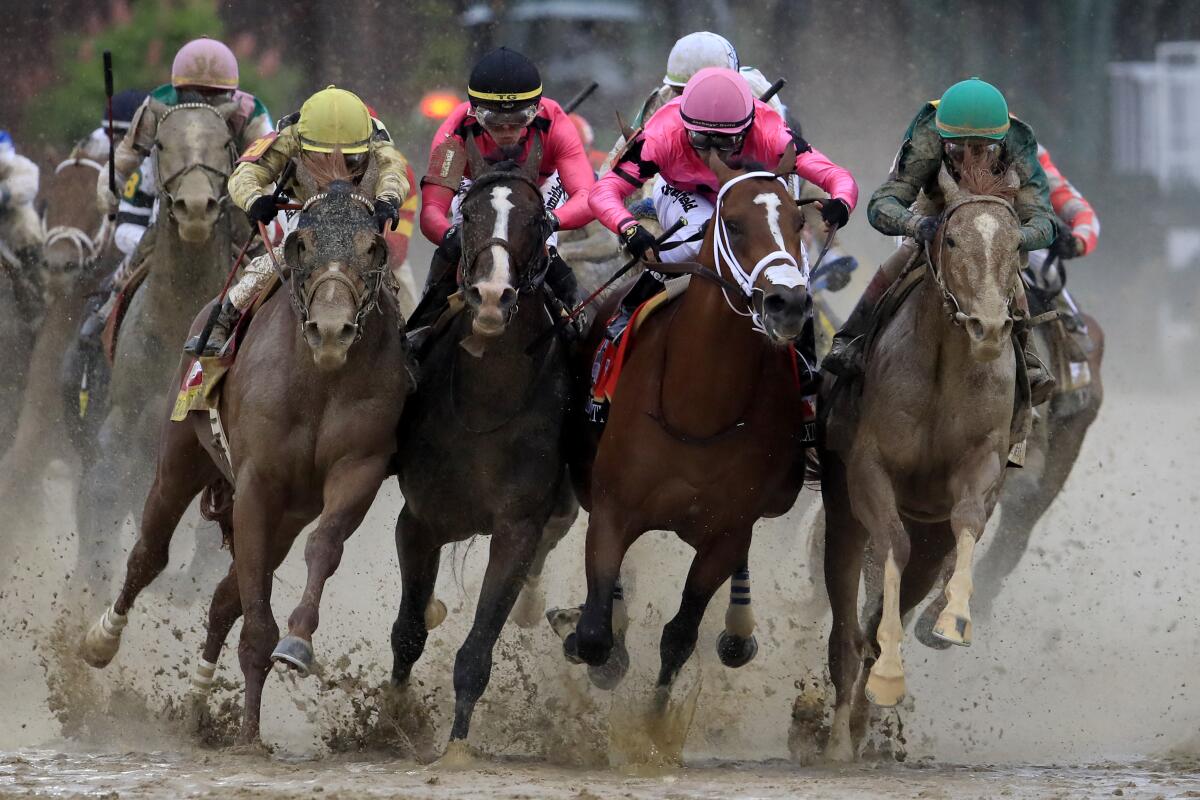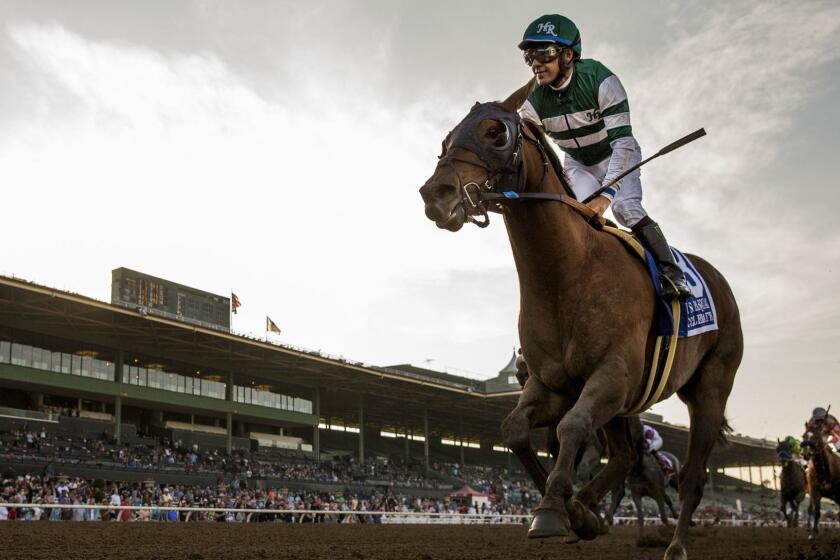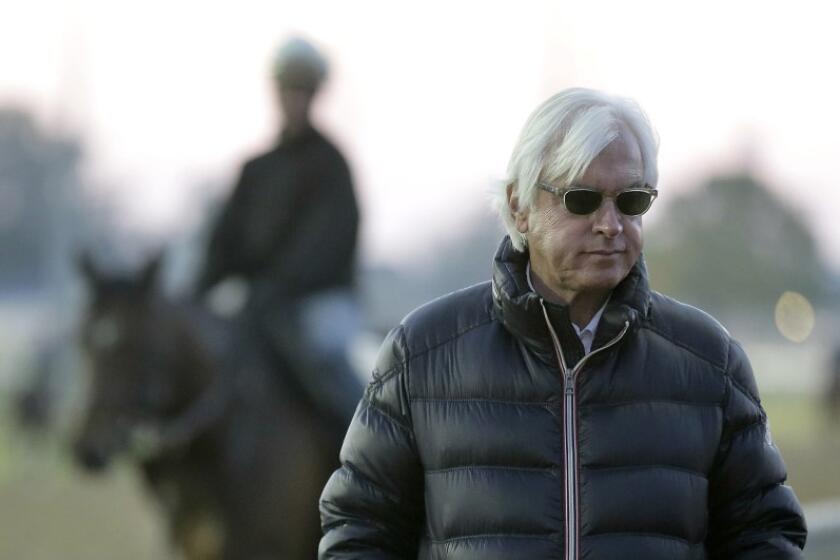California closer to adopting nation’s most restrictive horse racing whip rule

- Share via
The California Horse Racing Board, faced with a crisis over a spike in equine deaths, on Thursday voted to implement the most stringent use of the riding crop by jockeys in North America.
The riding crop, or whip, has not been proven to be a factor in the series of deaths, but the optics of a jockey hitting a horse repeatedly has been one of the things that has turned some public sentiment against horse racing.
Under the new rule a horse can not be struck more than two consecutive times without giving the horse a chance to respond. Currently in California it is three times, in New York it is seven times and at some jurisdictions, such as Kentucky, there is no limit.
Under the proposed California rule, a horse can’t be struck more than six times in a race, unless for safety reasons. No other state has a limit on the number of times a horse can be struck in a race.
The big news on Thursday will probably not be the racing at Los Alamitos but the California Horse Racing Board meeting that precedes it.
In addition, the jockeys must use the crop in the underhand position and it can not be raised above the shoulder. The jockey can show the horse the crop and tap them on the shoulder. Woodbine, a race track in Toronto, experimented with a rule similar to this for two months recently.
“We just passed the most restrictive whip rule in North America and maybe in the world,” said Greg Ferraro, a veterinarian who is the chairman of the CHRB. “I realize at this time no one is happy, including me. But we’ve gotten to the point where we had to move. Somebody has to be first. We’d like to see a national rule and we’d certainly support it.”
The CHRB had hoped to adopt something shared by the newly created national Thoroughbred Safety Coalition, but the group could not come to any agreement on a crop rule.
However, it’s not a certainty this rule will actually be put in place. Under the regulatory process in California there is a multi-month process, which includes a 45-day public comment period, before it comes before the board for a final vote. During that time, and at the meeting it is voted on, the board will listen to other proposals.
The 87 minutes of discussion on this rule started with Ferraro telling the group he didn’t want to hear how bad the two proposals were that were to be voted on.
“We know they are bad,” Ferraro said.
Those rules were much more restrictive and basically limited use of the crop only in the case of safety.
Trainer Bob Baffert won both the Grade 1 and 2 races for qualification for the Kentucky Derby and Kentucky Oaks.
The Jockeys’ Guild had four speakers discuss their proposal, which was less restrictive, allowing for seven uses of the crop but in the forehand (up) position.
Craig Fravel, chief executive for racing at the Stronach Group, said his company preferred the more restrictive rule. Josh Rubinstein, president of Del Mar, and Tom Robbins, director of racing at Del Mar, both wanted more study. Ed Allred, chairman and owner of Los Alamitos, stressed there should be a consistent national rule and urged California not to go it alone.
The only concession to what the board had proposed in the last 24 hours was to reduce the penalty of a violation from “at least” a $1,000 fine to “up to” a $1,000 fine. Jockeys who violate this rule will also suffer a minimum three-day suspension.
There were other topics in yet another marathon meeting of 234 minutes at Los Alamitos. Rick Baedeker, executive director, said the CHRB will not meet its announced deadline of December for the results of its investigation into the horse fatalities at Santa Anita. The new target is Jan. 15.
The board also outlawed the use of bisphosphonates within a CHRB-controlled enclosure. Bisphosphonates are a drug that can alter bone structure.
More to Read
Go beyond the scoreboard
Get the latest on L.A.'s teams in the daily Sports Report newsletter.
You may occasionally receive promotional content from the Los Angeles Times.













